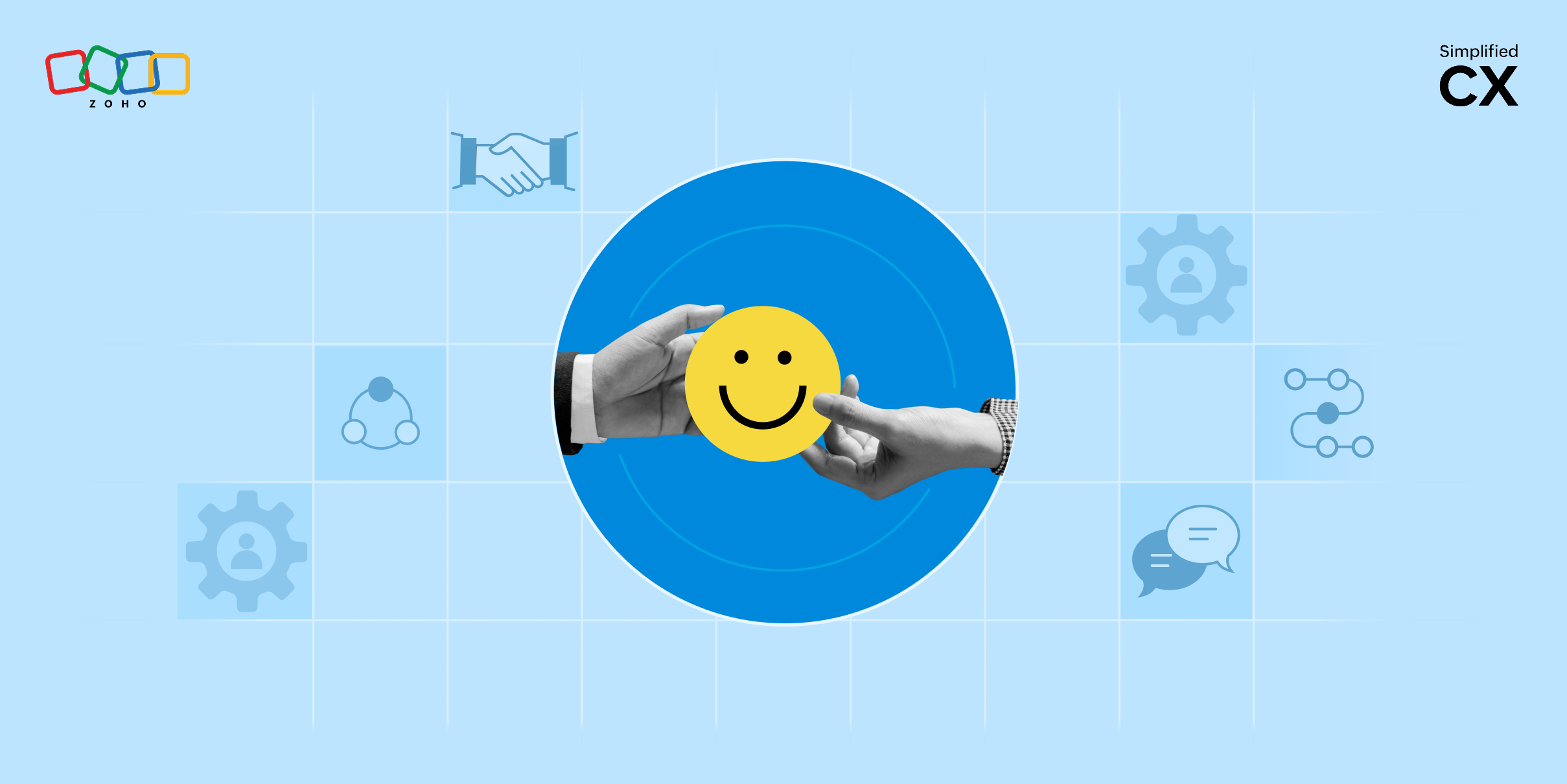Build rapports to retain your customers
- Last Updated : October 18, 2023
- 1.1K Views
- 4 Min Read

Customers come and go. So some brands focus mainly on ways to win new ones, even though acquiring new customers costs much more than retaining existing ones. Also, as customers stay longer, they begin to trust your brand more and make repeat purchases. Smart brands prioritize customer retention, and look into why their customers leave in the first place.
Customers don’t always leave because of the price. Undoubtedly, some customers are motivated by bargains and focus on price points alone. But for the most part, customers leave because they are unhappy with the service they receive. Remember: customer relationships, like all others, come down to trust. From promises made by salespeople to the attitude of support agents, if your brand doesn’t follow through on its commitments, your customers will make their purchases elsewhere.
Relationships begin with your brand story.
In business, like in art, successful stories rely on strong, honest narratives to win over the audience. Emotions influence customers’ decisions on which stories to embrace, especially when the decision involves buying into new ways of thinking. If customers can’t connect with the story, they’ll find it difficult to shift their point of view and accept other perspectives.
Make it easy for customers to buy into your brand story.
You can do this by appealing to their needs and emotions. The easiest way to do that is to share the truth about why you do what you do. Your story must be proof that you have what it takes to succeed and endure in business: heart, head, and hands, working in tandem.
Three stages to a brand story:
Recognize the needs that drive your business, your brand, and the market.
Acknowledge their impact on your decisions.
Share this with everyone your business impacts, through popular and viable channels.
At every stage, you need to plan for optimal reach and maximum benefit. This calls for key elements to help craft an honest narrative that connects with its audience, and relates to their needs and expectations. That connection will inspire them to make their purchase decisions with your business.
Key elements for a good brand story:
Social, emotional, and economic reasons for starting, building, or transforming your business
Pressing needs of the market that inspired your business decisions
Unfulfilled customer expectations that your business can meet effectively
Unique need-related propositions that’ll appeal to more customers
Pay attention to the details before you finalize your plans. Here’s a list of important tips to help you maintain better relationships and retain your customers:
Be discerning. Poised at the threshold of growth, many brands have made the error of placing their own perceptions of market needs above those of their customers. It’s easy to get carried away with our perceptions. As human beings we’re able to both empathize with customers’ needs and project our own feelings onto them, misunderstanding what they really need. Keep an eye out for the latter so you can avoid it.
Be present. It’s a 24/7 world. The Internet made the global marketplace possible, and we now live and work across time zones. Smart phones and social media create opportunities to be there for your customers every time they need help. Always be present to support your customers, and they’ll reward you with their loyalty.
Be personable. A little grace can go a long way in building relationships and establishing trust. Add it to your business processes, making it easier for customers to relate to your brand. Remember customers are people, not mere fields in a database. Greet them by name and let them know you’re aware of their specific needs. For example, is your customer a stay-at-home parent who prefers to be contacted when the children take their mid-morning nap? Or a busy professional who favors email, so they can read and respond at their pace? Respect these preferences and let your customer know you care.
Be honest. Be prepared for things to go wrong despite all your best-laid plans, and when they do, inform your customers. Ideally, any business wants to deliver what they’ve promised without any complications or obstacles. Unfortunately, that can’t always be the case and there could be a delay in product supply or resolving a customer complaint. Make sure you inform your customers before they ask about it. Keep the lines of communication open and always be honest to provide an exemplary customer experience.
Be consistent. A smart brand is consistent with its communication and processes at every stage. Your employees must be trained to represent the ethos of your brand, from marketing to support. Make sure your brand story and objectives are clearly communicated to all your employees. Encourage your teams to buy into your ethos and voice so your customers are served with the same level of quality they expect from your brand story.
Remember to keep it simple. Customers are inundated with information about a variety of products and services. This endless flow can confuse your customers and render your marketing efforts useless. So make the effort to cut through the bustle and simplify how customers:
Receive your information,
Gain confidence in your brand, and
Reflect on your expert opinion to make their purchase decisions.
With this basic framework, you can plan for business processes to reflect your brand identity and emphasize your commitment to earn customer loyalty. Every customer that stays with your brand is proof that your brand story rings true. They will advocate for your brand and guide new customers your way. A high customer retention rate is the biggest advantage a brand can have to sustain market share.


